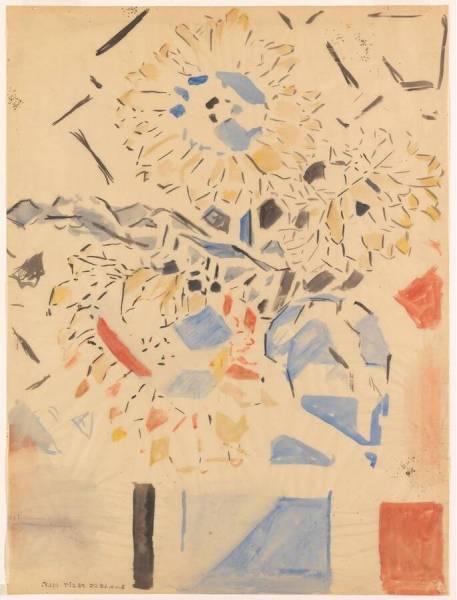The Romans already painted still lifes on walls, as can be seen in Pompeii. Constantijn Huygens was the first to use the word "inanimatis" around 1630 when describing the work of Jacques de Gheyn and Johannes Torrentius. According to him, there was no one "who painted things of glass, tin, earthenware and iron" better than Torrentius. It was not until around 1650 that the word "still life" first appeared when describing an estate inventory. The meaning of that neologism could indicate a group of immobile objects for a painting from life. Rembrandt used the term a suspended life.
In terms of still life, the flower arrangement (flower pot and the like) is especially popular. Then follow fruitage, the banquette and kitchen and to a lesser extent breakfast. Whether flowers, fruit, game, fish, birds or precious silver, glass, porcelain or plain earthenware were depicted, the exuberant display of abundance remained an essential aspect of the Dutch still life. Always carefully arranged and sometimes surrounded with small objects such as shells. Not infrequently there was a message incorporated into it, especially in Protestant Netherlands. You say it with flowers! Flower still lifes have symbolized transience and fruits for fertility since the 16th century. We have (had) several flower still lifes for sale.
Dutch flower still lifes became extremely popular in the 17th century. The beauty of the flowers decorated the lavish living rooms of the wealthy. Flowers from different seasons were often brought together. Many bouquets in flower still lifes cannot actually exist, but they showed how well traveled the client was. Many still lifes were also used at that time as a kind of reference work for flowers. They were conceived as small encyclopedias.
As a result, many specialists were active in this genre from the sixteenth to the nineteenth century. Think of Balthasar van Ast, Cornelis van Spaendonck, Gerardine van de Sande Bakhuijzen and Margaretha Roosenboom.

Gerardine van de Sande Bakhuijzen
A still life work of art is often painted with great care and detail. A lot of attention is also paid to the use of light and dark tones. With a still life painting, nothing will move and this allows an artist to show his craftsmanship in all details. And those details in particular characterized the flower still lifes until the end of the 19th century. After that, flower still lifes, like other works of art, were more of an expression. Less photographic and less botanical.
In the last quarter of the 19th century, modernist-oriented artists such as Vincent van Gogh also started painting flowers and flower still lifes. In the first half of the 20th century, the theme even became popular with artists who worked in the abstract direction, such as Piet Mondriaan and Bart van der Leck.

Bart van der Leck, Zonnebloem
In a book by Saskia de Bodt, my former thesis supervisor, and Maartje de Haan from 1998 it becomes clear that in the period between approximately 1870 and 1940 no longer only 'traditional' flower arrangements were made, that is to say paintings with the main theme carefully painted. suitable flowers in a vase. Flowers also play a more general role in still lifes, portraits or interiors. Paintings of gardens, flowery paradises, often created by the artist himself, form a separate category. Flower bulb fields are also part of the tradition of flower still lifes and recording gardens. Here it slowly transitions into the landscape genre, but the color composition and the purpose of the artwork (bringing color to a room) are the clear similarities. From Claude Monet to Vincent Van Gogh and Ferdinand van Hart Nibbrig to Ben Viegers and Jo Koster, they have all immortalized the colorful fields on canvas one or more times.

Vincent van Gogh, Bollenvelden
We keep an eye on them on the art market because they are still popular. So if you want to sell works by George Rueter, Ben Viegers, Jo Koster van Hattem, Jan Voerman Jr. or Ferdinand Hart-Nibbrig, please contact us. We always have a few flower still lifes in our collection, such as the spring bouquet by Hessel de Boer, the color etchings by Iger or these roses by George Rueter.


